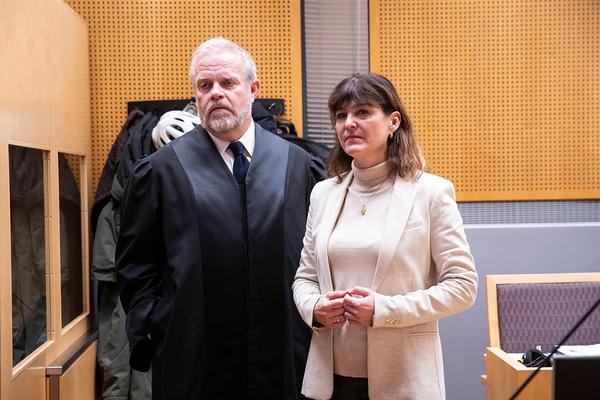18. mai 2016
The Relationship Status of Journalism and Platforms: It’s Complicated

Journalism has fully embraced the power and reach of social media platforms, and there’s no turning back. But in the […]
Journalism has fully embraced the power and reach of social media platforms, and there’s no turning back. But in the process, has journalism given up its greatest strength — its independent autonomy?
What has happened in journalism in the past year has created what we might call the “publishers’ dilemma.” A central question all companies are now grappling with is how much of the infrastructure of publishing and advertising sales to keep complete control of, and how much to give away to distributed platforms. As the world becomes dominated by mobile, social gatekeepers — the Facebooks, the Apples, the Googles — journalism is becoming a minority activity in a converging ecosystem.
Over the past twelve months, technology companies have offered strong incentives to individual publishers to create much more journalism on their platforms than ever before, with Snapchat “Discover,” Facebook Instant Articles, Apple News, Google’s Accelerated Mobile Pages, and Twitter “Moments.” The time has passed when publishing could claim to draw strength from its independence. Using distributed platforms is seen by some as being the ultimate Faustian pact — independence traded for a chance at survival.
A few years ago, the news industry paid almost no attention to the Facebook F8 developer conferences in San Francisco. The annual meeting where Mark Zuckerberg talked to technologists about what the company would build next was of interest only to technology reporters. But in 2016, publishers swarmed into a packed theater to hear what Facebook was planning.
Facebook has become a useful proxy for how we think about the relationship between news, journalism and technology. A year ago, when Facebook was first suggesting that publishers could publish directly onto its platform with new “instant article” pages, there was a cautious approach by a handful of selected partners. Now publishers clamor for the rapidly growing platform to not only work with them, but to actively help them find solutions to collapsing business models. Facebook executives at F8 this year looked nervous.
“We’ve helped game developers make millions of dollars, but with news we are still figuring it out…and we want to help you figure it out,” said Justin Osofsky, the head of media partnerships for Facebook, managing expectations within the room and across the industry.
That publishers care so much about what Facebook is thinking is a testament to how intertwined news publishers have become with social platforms. According to figures from social media metrics company Parse.ly, Facebook in 2015 became the largest traffic referral source for the sites it measures — for the first time, ahead of Google. And Facebook also owns the messaging service WhatsApp and the photo sharing site Instagram, both of which are growing rapidly and encouraging different types of social activity.
Newspaper publishers were among the first businesses to really understand, and feel, the powerful changes that the internet brought to bear. As long ago as 1995, newspapers were imagining what a world would be like where you could, and probably would, publish 24 hours a day. Such a simple acceleration in publishing seemed like an extraordinary change back then, yet it was comparatively trivial. Today journalism faces a much bigger transition — a profound change to every aspect of its practice.
Newsrooms are already moving quickly. Key newsgathering is done through social aggregator sites such as Dataminr, with social media editors now central players in commissioning and shaping the output of a newsroom, rather than optional afterthoughts. Teams at operations ranging from the Wall Street Journal to BuzzFeed have news and curation teams that work on content and journalism only for third-party sites.
The gravitational pull of large platforms is unavoidable. Ignore it, and your business model has to exist wholly outside the current ecosystem, as advertisers, readers, listeners and viewers now access their news and information diet through a very small number of US-based companies.
The game of pursuing scale is not bringing the rewards hoped for in news. As advertising sales hit the floor at the beginning of 2016, even the strongest businesses started to falter. Newspapers like the UK’s Independent withdrew from the market, digital sites like Mashable swiftly closed whole news operations, and even BuzzFeed, the model for building a new business out of viral content and native advertising, was revealed to have missed its revenue targets by a long way in 2015. Advertising as a model for publishers is broken. Subscription models are becoming more attractive, but nevertheless still only work for a small number of elite publishers. And non-profit news, with very small budgets but often extraordinary results, is becoming a much more significant model for journalism, even in market-driven America.
The next wave of applications that will change reading and viewing habits is already here. Livestream video, virtual reality, messaging apps, bots that create and curate stories and automatically deliver them to your phone — these are all technologies that are already being used by both platform companies and news organizations. With each iteration of technology, we slide further and further away from the notion that to be a news publisher means to own everything — the journalist, the presses, the direct relationship with advertisers. Larger publishers such as the New York Times believe they must invest in ‘destinations’ for their readers and separate ways of working with advertisers, in order to create leverage in this slippery and changing environment.
The sudden and irreversible shift in how we publish and receive news means that the structure of newsrooms, and the size and focus of their technologist teams, will have to shift as well. A newsroom with a creative and talented head of product is at an immediate advantage. A newsroom where the curation team or social media editor are effectively editing stories and making critical strategic decisions will do much better than those that are marginalizing key distribution techniques. Data is more central than ever; stories have to be tested as they are released; products have to be built on a detailed knowledge of user behaviour; advertisers effectively want “full service” from publishers or no service at all.
The next set of decisions publishers have to make will be about how much of the infrastructure of publishing to keep. Dumping a legacy web publication system will soon be as imperative as exiting print was for newspapers. A news organization based on a studio model is just around the corner, where editors will work with journalists to make their stories work on whatever platform or medium attracts audiences or revenue.
Where does this leave journalism? As power structures around the globe shudder with the revelations in the Panama Papers, it is heartening to see that the potential and impact of journalism are not diminished, but rather finding new forms through which to thrive.
It is, without doubt, beneficial to journalism that it has managed to capture the attention (and a sliver of resources) from the platforms and search engines that have denuded traditional publishers of much of their purpose and revenue. The more that journalism is recognized as potent and essential by people like Mark Zuckerberg or Larry Page, the more beneficial it is to the field. But the limitations of platforms’ transparency regarding how news is distributed still needs careful scrutiny.
We know that there is enormous amplification power in networks. The 1.6 billion “active” Facebook users represent a figure approaching 25 percent of the Earth’s entire population, a far greater number than a single publisher has ever been able to claim. The responsibility they now have to distribute information fairly and transparently across countries and borders is a role Facebook did not necessarily seek. The civic and legal issues of this kind of power over information have not been close to properly explored, and there are few codes, legal frameworks or even agreed-upon standards which we can apply to the situation.
The European Union has been one of the few regulators to make effective interventions; even here, we see the solutions are rarely perfect. The famous 2013 “right to be forgotten” ruling from the European Court of Justice addresses the issues of privacy against a continually published archive. Yet it is far from perfect, and favors those who have the time and money to pursue a case to have search results adjusted.
Dealing with the complexities of setting new norms and standards, preserving archives for civic and democratic purposes, and allowing journalists, publishers and the public to know why certain items are removed or censored — these are all pressing issues in this new relationship between platforms and those who seek to publish through them.
The dilemma of how to make money in a market which is no longer under your control continues to be the primary survival challenge for news. But the civic issue for democracy — how we will navigate and clarify this new relationship in a post-broadcast world — is in many ways far more important.



